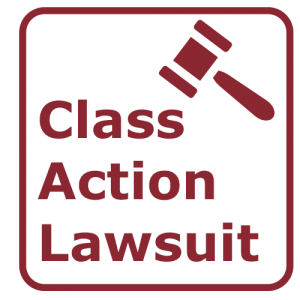Collective Justice: The Power and Process of Class Action Lawsuit Claims
Collective Justice: The Power and Process of Class Action Lawsuit Claims
Blog Article
Comprehending Course Activity Legal Action: A Guide for Lawyers
Course action suits have actually become an essential part of the legal landscape, permitting for the debt consolidation of multiple cases into a solitary activity. For attorneys, comprehending the ins and outs of class action lawsuits is crucial in effectively representing their clients. This extensive guide discovers the principles of class action suits, from identifying possible course participants to navigating the certification process. Additionally, it explores vital approaches for handling class activity lawsuits and supplies insights right into bargaining and getting authorization for negotiations. By delving into the ins and outs of course action suits, this guide gears up legal representatives with the understanding and tools required to efficiently browse this complicated area of law.
The Basics of Class Activity Lawsuits
Course activity suits are a lawful system employed to combine comparable insurance claims from a group of individuals right into a solitary claim, supplying a economical and efficient strategy to looking for justice and resolution. This type of claim allows a representative complainant, acting on behalf of the whole class, to bring an insurance claim versus an accused that has actually allegedly created harm or went against the legal rights of numerous individuals.
The standard demands for bringing a course action claim include numerosity, commonness, typicality, and adequacy of depiction. Numerosity refers to the reality that the class must be so huge that joinder of all participants would be not practical. Commonality suggests that there have to prevail inquiries of legislation or truth that are shared by all participants of the course. Typicality requires that the insurance claims of the depictive complainant are regular of the insurance claims of the whole course. Adequacy of depiction makes sure that the representative plaintiff will properly stand for the passions of the whole course.
Class action legal actions can be beneficial for both complainants and offenders. For complainants, it enables them to merge their resources and share the threats and prices related to lawsuits. When they are up versus huge companies or entities, it also gives a level having fun area. For defendants, it offers the opportunity to effectively deal with numerous cases in a single lawsuit, avoiding the requirement to prevent many specific lawsuits.
Identifying and Assessing Prospective Course Members
After establishing the standard needs for a class action lawsuit, the following action is to determine and examine potential course participants. This process entails determining who might be part of the course and reviewing their claims to establish if they fulfill the required criteria.
To identify possible class participants, attorneys generally perform extensive research study and gather relevant details. This may involve reviewing documents, carrying out meetings, and checking out documents to recognize individuals or entities that might have been affected by the supposed misbehavior. It is crucial to develop a clear and detailed checklist of possible course members to guarantee that all impacted parties are included in the claim.
Once potential course participants have actually been identified, the following step is to evaluate their cases. If they satisfy the legal needs for course certification, this includes examining the merits of each private insurance claim to figure out. Legal representatives have to carefully examine the facts, proof, and lawful concepts of each possible course participant's case to ensure that they have a viable instance.
Examining potential class members additionally includes determining whether they meet the class definition and have experienced similar damage as a result of the defendant's actions. This requires comparing the facts and conditions of each potential course member's scenario to the allegations and legal concepts presented in the lawsuit.
Navigating the Class Qualification Process
To effectively browse the class certification procedure, lawyers need to faithfully adhere to the step-by-step demands established forth by the court. Course qualification is a vital step in a class activity lawsuit, as it establishes whether an instance can proceed as a course action, standing for a team of people who have similar cases against an offender. The process includes satisfying particular requirements, such as numerosity, commonality, typicality, and adequacy of representation.
First of all, attorneys must develop numerosity by demonstrating that the class is so large that private joinder is unwise. This needs a detailed analysis of the cases and defenses included.
Following, legal representatives must show typicality, which means that the depictive plaintiff's cases are typical of the cases of the course members. This makes certain that the passions of the representative plaintiff align with the rate of interests of the class. Attorneys should show adequacy of representation, meaning that the representative complainant and their advise will relatively and properly stand for the interests of the class.
To navigate this process successfully, attorneys must extensively prepare by carrying out considerable research, collecting proof, and creating an engaging debate that satisfies each of these criteria. They should additionally be prepared to react to any type of obstacles or arguments raised by the accused. By diligently sticking to the step-by-step requirements established forth by the court, attorneys can boost their opportunities of getting course qualification and advancing the passions of the course participants.

Trick Methods for Managing Course Activity Lawsuits
Upon effectively navigating the course qualification process, attorneys have to then execute key approaches for successfully managing class action litigation. These strategies are essential to make sure that the case continues smoothly and successfully, inevitably making the most of the possibilities of a favorable result for the class members.
One secret strategy is to establish a cohesive and solid legal team (Class action lawsuit). This involves setting up a team of lawyers with experience in course activity lawsuits, as well as other relevant locations such official website as the particular sector or subject involved in the case. A well-rounded group can bring different perspectives and skills to the table, boosting the general performance of the litigation
One more essential method is to establish a detailed and well-thought-out litigation strategy. This strategy must detail the total goals of the instance, in addition to the details legal theories and debates that site that will be gone after. It must likewise consist of a timeline and spending plan to make certain that the situation remains on track and within the designated resources.
In addition, legal representatives must actively involve with the class members throughout the lawsuits process (Class action lawsuit). This consists of supplying routine updates on the progress of the instance, looking for input and comments from the class members, and attending to any kind of concerns or inquiries they might have. By fostering open interaction and partnership, attorneys can build count on and assistance among the class members, which can be critical in attaining a successful resolution
Resolving Class Action Claims: Arrangement and Approval
When it involves settling class action suits, effective arrangement and acquiring approval are vital steps in attaining a resolution. Class activity lawsuits are intricate and include a multitude of complainants, making it important to get to a settlement that is fair and satisfactory to all celebrations involved.

As soon as a negotiation agreement is reached, it must be authorized by the court. The court's function in this procedure is to make sure that the negotiation is reasonable, practical, and effectively protects the rate of interests of the course participants. The court will certainly take into consideration factors such as the nature of the claims, the stamina of the proof, the prospective healing for the class members, and any type of arguments elevated by course participants.
Obtaining court approval is essential as it offers finality to the negotiation and secures the rate of interests of the course participants. It ensures that the negotiation is binding and enforceable, and course participants can receive their rightful payment.
Conclusion

Course activity lawsuits have actually come to be an integral part of the legal landscape, permitting for the consolidation of multiple claims into a solitary action. Class accreditation is an important step in a class activity claim, as it identifies whether an instance can continue as a course activity, representing a team of individuals who have comparable cases versus an offender. By faithfully adhering to the procedural requirements set forth by the court, legal representatives can increase their opportunities of acquiring course accreditation and progressing the interests of the class participants.
The court will think about factors such as the nature of the claims, the stamina of the evidence, the potential recuperation for the course participants, and any objections raised by class members.
By determining and assessing possible class members, lawyers can establish the practicality of a course action legal action.
Report this page